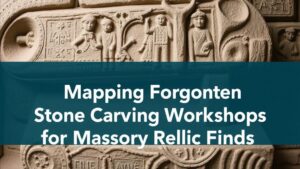Prompting AI to Extract Artifact Mentions in Early Explorers’ Logs and Notes
Introduction
The exploration of uncharted territories during the Age of Discovery significantly impacted the world’s geographic and cultural understanding. Early explorers meticulously documented their journeys in logs and notes, which often included mentions of various artifacts encountered along their travels. Recent advancements in artificial intelligence (AI) offer novel opportunities to analyze these historical documents, particularly through the process known as prompting. This paper aims to examine how AI can be employed to extract artifact mentions in early explorers’ logs and notes, using a structured methodology anchored in natural language processing (NLP).
Historical Context
The Age of Discovery, spanning from the late 15th century to the early 17th century, saw explorers like Christopher Columbus, Vasco da Gama, and Ferdinand Magellan traversing previously uncharted territories. Their logs serve as primary historical documents. For example, Columbuss logs from his 1492 voyage to the Americas include descriptions of indigenous peoples and their artifacts, such as tools and ceremonial objects.
The importance of these logs is underscored by specific incidents: during Cabot’s voyage in 1497, he documented encounters with native cultures in Newfoundland, noting distinctly crafted artifacts that were vital for understanding indigenous practices. To analyze these records effectively, precise identification and extraction of relevant artifact mentions are crucial.
Artificial Intelligence and Natural Language Processing
AI, particularly through the lens of natural language processing, provides tools for efficient data extraction from vast bodies of text. NLP encompasses a variety of techniques, including tokenization, named entity recognition, and topic modeling. These methods can assist researchers in systematically identifying and cataloging artifacts mentioned in exploration logs.
Tokenization and Named Entity Recognition
Tokenization involves dividing text into individual terms or phrases. For example, when analyzing Logbooks, explorers references to artifacts can be isolated for further examination. Named Entity Recognition (NER) extends this by categorizing terms into predefined classes, allowing AI to differentiate between various artifact types, geographical references, and person names.
Useing a Prompting System
Prompting refers to guiding AI to focus on extracting specific information. By developing targeted prompts, researchers can enhance the accuracy of NER systems in identifying artifact mentions. For example, a prompt might specify, “Extract all mentions of physical objects with descriptions from this text,” leading to improved results in identifying tools, weapons, or ceremonial items.
Real-World Applications
- Digital Archives: Institutions such as the Library of Congress and European Archives can enhance their digital collections through AI-driven artifact extraction, allowing historians and enthusiasts to find relevant information swiftly.
- Interactive Learning: Educational platforms can incorporate AI tools to help students learn about exploration artifacts through engaging interactions with historical texts.
- Cultural Preservation: By identifying and documenting artifacts, researchers contribute to preserving cultural heritage, as well as fostering interest in the histories of indigenous peoples.
Challenges and Limitations
While leveraging AI for extracting artifact mentions is promising, several challenges must be addressed. The historical context, terminology variations, and language differences can impede accurate extraction. For example, descriptions of artifacts may differ dramatically between explorers; understanding the contextual nuances is crucial for valid interpretations.
Data Quality and Annotation
The quality of the source texts plays a significant role in the effectiveness of AI applications. Poorly scanned documents or incomplete logs can lead to gaps in the data, complicating AI training processes. Plus, human annotation is essential for training AI systems accurately, making it necessary to develop rigorous annotation protocols.
Conclusion
Applying AI, particularly through techniques like prompting and NLP, expands the horizons of historical research on early explorations. By effectively extracting artifact mentions from explorers logs, researchers can deepen the understanding of cultural exchanges and practices during the Age of Discovery. Addressing existing challenges will be fundamental in harnessing AI’s full potential, paving the way for innovative methodologies in historical research.
Actionable Takeaways
- Integrate AI and NLP techniques into historical research methodologies to streamline artifact identification.
- Promote collaboration among digital archive institutions to enhance data quality and accessibility.
- Foster interdisciplinary approaches, uniting AI experts and historians for optimized outcomes in historical data extraction.


